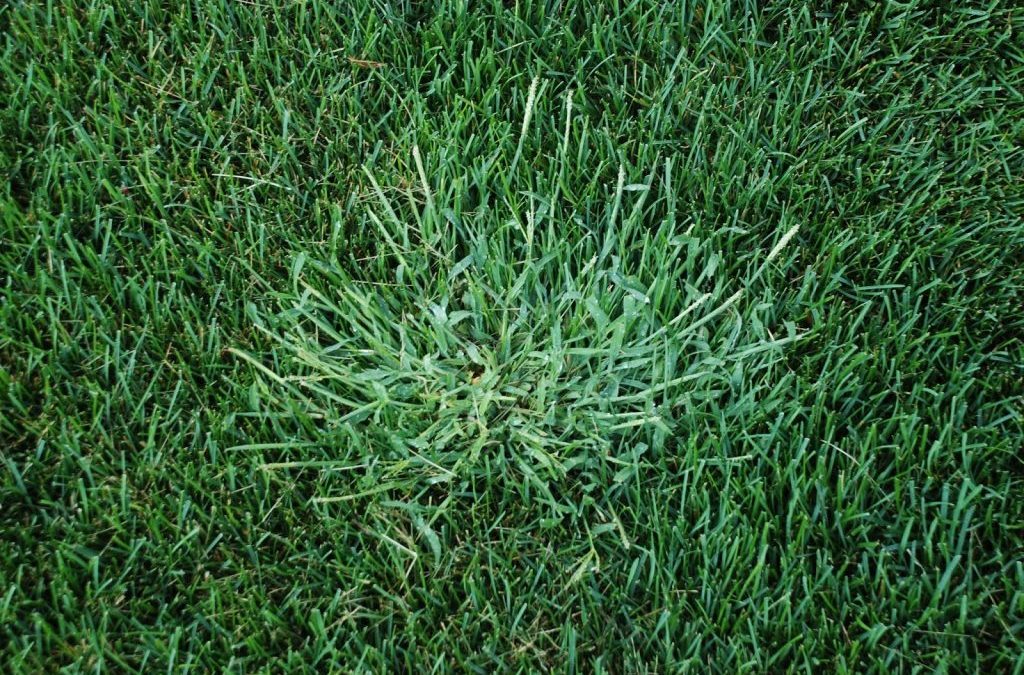Weeds are troublesome plants growing where we don’t want them, and Houston has plenty of them. They’re classified in several different groups: grasses and broadleaf, and perennials and annuals. Annuals have winter and summer varieties: winter weeds die when it gets hot, and summer annuals die when it cools off in the fall. Many of Houston’s worst weeds are winter annuals because not much plant life holds up in the summer heat. Here are our picks for Houston’s worst weeds:
Crabgrass
This pervasive weed looks a lot like the grass in your lawn. It’s not always noticeable if you have St. Augustinegrass, a popular type of lawn grass in Houston. While it’s an annual weed that dies in winter, it’s a prolific seeder, and those seeds can stick around for years. It grows in clumps and will choke out your lawn if not removed
Bluegrass
Bluegrass is a winter annual that’s common in Houston. Its upright tufts stand out in dormant St. Augustine lawns. Don’t confuse it with the Kentucky bluegrass that grows in northern climates – winter bluegrass is its homely relative. It appears when the temperatures begin to cool in the fall. It turns a yellowish-white after seeding, which can happen several times over the winter but usually occurs in the spring. It’s a prolific seeder, so you’ll want to remove it before seeding starts.
Doveweed
This is a newer weed on the Houston lawn scene, and it loves the hot, humid climate. It resembles grass and has a small purple flower. It looks innocent enough but does major damage to a yard in a short amount of time. It kills grass then leaves brown patches when it dies in winter. It can spread from yard to yard with lawn clippings.
Virginia Buttonwood
Like doveweed, this hard-to-control weed appears from May to June and loves Houston’s hot and wet conditions. It also spreads quickly and aggressively, then dies in winter. It’s a low-growing, vine-like weed with tiny white flowers.
Spurweed
Your bare feet will have no problem identifying this waxy winter annual. It fruits in late spring with small, sharp (and painful) barbs. Treat spurweed with a pre-emergent herbicide in the fall when the plants first emerge.
Buttercup
Buttercups are a perennial weed with a pretty yellow flower. The name comes from the shiny, waxy appearance of the flower’s petals. They grow and spread in early spring and will take over your garden year after year if not removed. While they’re attractive and grown in some areas as a desired plant, they’re best left out of lawns and gardens.
Nutsedge
This grass-like weed may drive you nuts because it’s extremely hard to kill. It has thicker leaves at its base than your regular grass and typically grows in groups of three blades. To get rid of it, you have to get rid of the nut at its base. Here’s the hard part: You have to get rid of all the nuts, every single one, or they’ll be back in short order.
Mock Strawberry

While it may seem sad to kill anything with the name “strawberry,” this weed will invade your flowerbeds and produce a decidedly not-tasty (but not poisonous) fruit. Mock strawberry is common in wooded areas or open meadows. It has rounded red berries with hard, protruding seeds.
Keep in mind that a healthy lawn is your best defense against weeds. Aerate, fertilize in spring and fall, mow properly and remove thatch. Work with your lawn care service or local nursery on other strategies to control weeds.
Have more questions about lawn care in your lawn? Visit our Houston, TX lawn care page for more guides and additional information.

